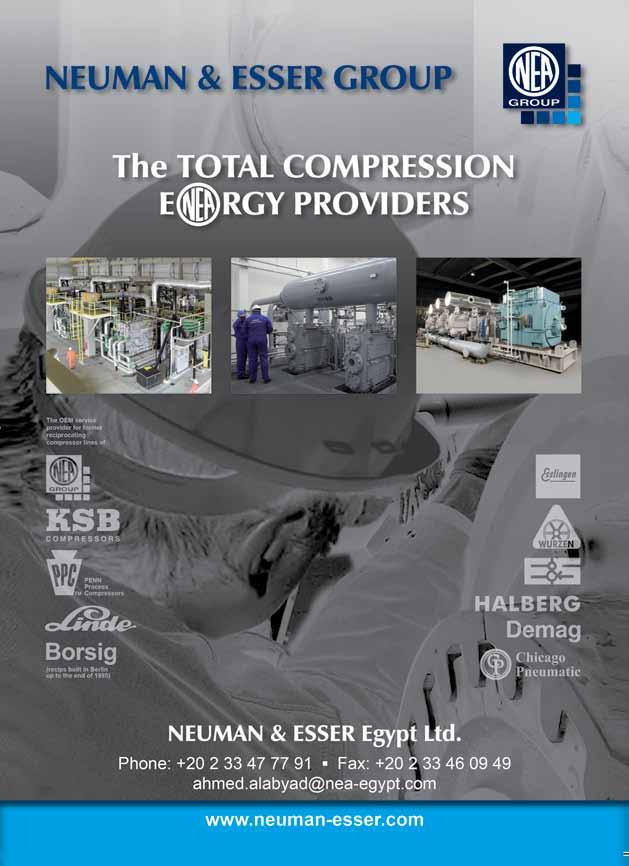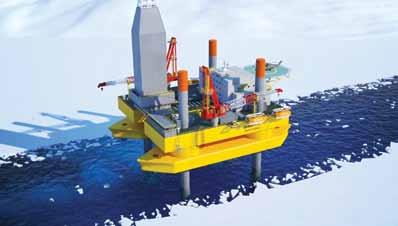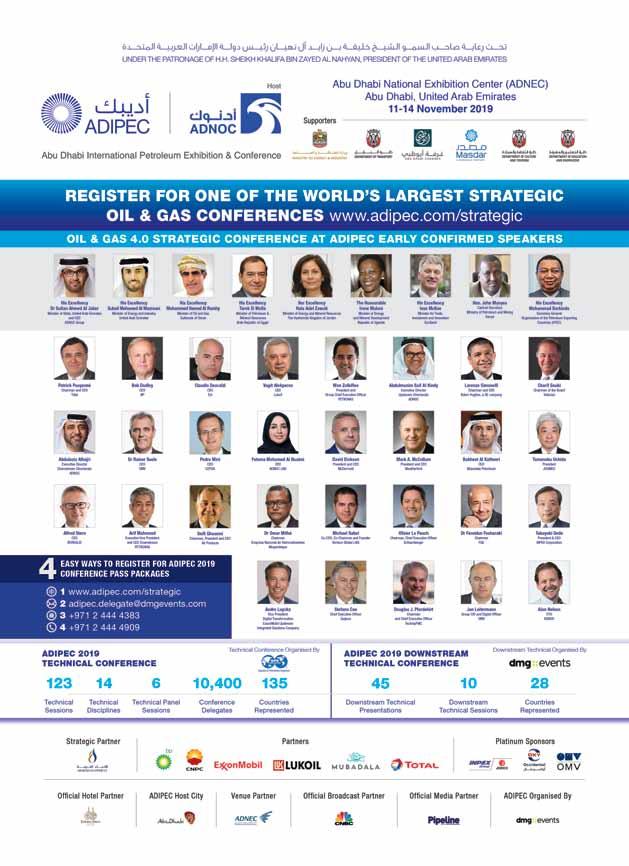
24 minute read
Zohr Experience Determinations of Engineers Turnover Working for National oil and gas Companies in Egypt
By: Abdallah Farahat, Agiba Petroleum Company
Determinations of Engineers Turnover Working for National oil and gas Companies in Egypt
Advertisement
1.Introduction
Keaveney (1992) stated that Turnover as a phenomenon attracts a lot of scholars to understand the practical and theoretical aspects behind it. From theoretical viewpoints, knowing all affecting factors would help controlling this phenomenon. From practical point of view, minimizing turnover would reduce replacement cost. Murthy (2003) pointed that to enhance productivity, corporations invest on their employees to develop their skills by providing training courses and more, but, however after gaining experience, knowledge and skills they leave. Such employees are invaluable to organizations and not easy to replace (Meaghan et al., 2002). Another result from turnover is discontinuing of knowledge, currently skilled employee is considered as an asset and a competitive advantage key (Urbancova & Linhartova, 2011). Kevin et al. (2004) mentioned that although there is no standard guide lines and criteria to describe turnover as whole, a lot of variables have been used in understanding this notion.
1.1 Problem Definition
Egypt suffers from immigration of well educated and highly experienced people, this attracts a lot of scholars, organizations and government to understand and manage this notion. In well-known originations experienced and skilled employee considered as an asset. Most of them occupies technical roles and recognized as a pillars of companies, by the time they become seniors and managers. Retaining such skilled asset employees ensures success and provide competitive edge for firms. In Egypt, in the past 20-year national petroleum companies has been facing high turnover in experienced engineers who leave without enough notification period, this causes a lot of technical and managerial problems, and nonproductive time. The majority of Egyptian national petroleum companies are a joint venture between Egyptian General Petroleum Corporation -EGPC- and international companies like ENI, BP and Shell. All these companies are managed by Egyptian side and work according to national and local labor laws. The sector is facing a lot of problems e.g. shortage in human resources management system that appears in the lack of the vision, mission and objectives, passing by outdated policies and the inequity in apprise technical and non-technical employee, ending with weak plans in training, recruitment or retaining working staff.
1.2 The Purpose and the Objectives of the Study
The purpose of the study is to understand the employees’ behavior and intention to leave companies by investigating the factors led to turnover. Accordingly, we can overcome the drawbacks of this phenomenon.
The objectives of this study are:
1.Identify the type of employees and/ or engineers who mostly tend to leave 2.Determine the average years of experience when employees leave 3.Explore all determinations that influence turnover
4.Examine job fit, the alternative employment opportunities and organizational factor effect onturnover phenomena. This lead to the research question; what are the determinations of high turnover in engineers working for Egyptian national petroleum companies?
1.3 Conceptual Framework
The research main purpose is to introduce a turnover model as shown in Fig: 1. The model is consisting of dependent variable which is being measured in an experiment or evaluated in a mathematical equation. The dependant variable is turnover. The independent variable is defined as the variable that is changed or controlled in a scientific experiment to test the effects on the dependent variable. The independent variables are: the job fit, the alternative opportunities and organization factor.
Also there are a moderating variable that affects the direction and/or strength of the relation between dependent and independent variables. These moderating variables are as the following: Ó Job stress is a moderating factor that affects the relation between job fit and turnover. Ó Oil prices is a moderating factor that affects the relation between alternative opportunities andturnover Ó Organization culture, rewarding and financial system, and supervisory level are a moderating factorsaffecting the relation between organization factor and turnover.
1.4 Hypotheses
The research is introducing three hypotheses as follows: H1: There is a reverse relationship between employee turnover and job fit. Job stress is a moderating factor. H2: There is a direct relationship between employee turnover and alternative opportunities. Oil prices is a moderating factor. H3: There is a reverse relationship between employee turnover and organization factors. Organization culture, supervisory level, and rewarding and financial system are moderating factors.
2.Literature Review 2.1 Turnover Definition
Reggio (2003) simply defined employee turnover as leaving or moving out of firm. Another definition of turnover as a rotation of employee or workers between organizations and firms to occupy different and new jobs in labor market (Filpe, 2012). This behavior reflects problem in the organization not the opportunity in the new job (Holzer and Wissoker, 2001). Price (1977) stated that turnover as a ratio: it’s the percentage of the employees leaving a company divided by the total employee number in the same company over a certain period.
2.2 Turnover Types
Flex (2012) stated two types of turnover, internal and external turnover, internal refers to occupying another job inside the firm while the external is related to move outside the organization. Another classification is voluntary and involuntary turnover (David, 2008). Voluntary is the employee choice to quit. On the other hand, in involuntary turnover employee does not interfere in this decision for example retirement and disability. Ulschak & Snowantle (1992) classified turnover in three categories, job-related, non-job-related, and lack of fit. Job related turnover happened due to employer decision to terminate low performance workers. Non-job-related the workers leaves because personal causes like relocation, family problems or health issues this causes must affect employee performance. Lastly,
lack of fit it›s related to employee job satisfaction, so he gets less satisfaction due to work environment or facing difficulties due to low qualifications.
2.3 Turnover Models
Beach (1990) introduced The Image Theory, it deals with data processing during decision making. This model depends on understanding how people analyze reasons before quitting. It shows that individuals took decisions based on their experience and not have a clear result from processing all income information. The theory shows on three decisional arrangement aspects. First one is the «value image» and benefits expected from the job. Second is the personal goals that results from comparing the expected value with the actual findings «current values», this shall affect the personal job behavior. Third concept is the «strategic image» by reaching the job goals this happen by comparing the person,s methods with value image. Another important model is the Unfolding Model by Lee and Mitchell,s (1994), the model describes paths or shocks that force an employee to reevaluate their jobs and take a decision of quitting. These shocks may be negative or positive; however, the model represent five paths lead to leaving the jobs. Path 1 script drive decision, the employee quits «Pre-programmed or automatic response» as a result of a certain situation like never promoting for five years, so it›s not related to job satisfaction or not. Path 2, Push Factor, it linked to dissatisfaction, if the employee evaluates his well performance in comparing with supervisor bad evaluation, this give a negative impression and push the employee to resign. Path 3, Pull Factor, the employee compares his job with similar in market, it somehow related to other opportunities with more benefits and not related to satisfaction. Path 4 and path 5 are almost the same and related to dissatisfaction, like not appreciating the extra effort, the difference is on the employee behavior toward the choking or triggering event. In Path 4, Quit job impulsively, the employee quit immediately. In path 5, Job search then quit, as it implies the employee search for a new job as an alternative then quits.
2.4 Turnover Model in Oil and Gas Sector
Harhara, Singh, Hussain (2015) introduced a conceptual model studying turnover intentions in oil and gas sector in UAE, the model shows the following independent factors: organizational commitment, individual factors, organizational factors and environmental factors. In the same time individual, organizational and environmental factors are affecting organization commitment. The objectives of this research is to show the impacts of Shift-Work conditions, working in remote areas, supervisory/leadership behavior, alternative growth opportunities Also to highlight the retaining strategies for those who work in remote and harsh areas. Harhara, et al (2015) argue that this model will help managers and HR to reduce turnover, farther study and testing shall be done on this model. Oluwafemi (2013) performed a research to study turnover intentions among workers in oil sector in Nigeria. Oluwafemi (2013) studied the relationship between turn over intentions and conscientiousness, agreeableness, emotional stability, perceived distributive justice, perceived procedural justice, perceived interactional justice, in additional to predicting turn over through contextual factors more significant than dispositional factors. The results of hypothesis are as the following: firstly, significant negative correlation between distributive justices, perceived procedural justice, perceived interactional justice and turnover. Secondly, no significant relation between conscientiousness, level of agreeableness and turnover. Thirdly, a significant relationship between emotional stability and turnover. Lastly, it was confirmed that contextual factors will predict turnover more than dispositional factors. In the end of the study, Oluwafemi (2013) stated that to boost the performance organization must set policies and procedures that insure justice, fairness and equity system. On the other hand, managers should be fair, honest and ethical. When recruiting, HR should use modern psychological tools to select prober workers.
2.5 Turnover Factors
This section is devoted to show and explain the factors affecting turnover according to the research proposal model in Fig: 1.
2.5.1 Job Fit
O’Reilly et al (1991) refers to the matching between the applicant and the job requirement. Good fit between employee personality and the job result in satisfaction. Inadequate selection result in voluntarily quit. Another issues are the organization value, workers who are believe in these values usually stay longer. In other words, satisfied happy work, is a productive one. Arnold and Feldman (1982) observed a direct relationship between the level of education and turnover, employee with highly educated levels are more likely to move. Kabungaidze et al., (2013) pointed than age have a negative relationship with turnover, hence, younger employees are more active and tend to leave. HR function to create a talent pool to help firm select suitable workers that match the requirements. Steel (1984) Stated that companies work hard to

match and attract those who match with their values and image. Beside that it›s important to retain those with high experience.
2.5.2 Job Stress
Job stress is considered a modern phenomenon in current work that leads to employee quitting. Beside job duties, other internal and external factors cause job stress like work over load, role conflict and family work conflict. Firth et al. (2004) claimed that turnover is affected by stress feeling, dissatisfaction and low commitment.
2.5.3 Alternative Opportunities
Arokiasamy (2013) stated that the perceived opportunity is an external uncontrolled factor. He claimed that there is significant relation between perceived external opportunities and turnover. Karavardar, (2014) showed that alternative opportunities growth influence turnover.
2.5.4 Organization Factors
Abassi et al. (2000) mentioned that a lot of factors affecting turnover like, poor management, compensation system, recognition and inefficient hiring practices. All these left negative energy in work place. In accordance Ongori (2007) stated that poor supervisors, recruitment policies, personal policies, grievance policies and lack in motivation lead to employee decision to quit. Starting form incorrect recruiting process, promotions not according to policies, and ending with improper management style. Beech et al. (2003) studied mining industry – Closest industry to oil and gas-, He found that the way of treating employees, firm culture and policies that reflects health and safety, facilities and compensations; all these factors influence turn over. These factors have a close relation with job satisfaction, organizational commitment and loyalty.
2.5.5 Organization Culture
Organization culture is values, beliefs panted in organizational member. Organizational culture affected with internal communication, involvement, trust, social coherence and job challenge. Firms that adapt innovational culture are providing supporting environment, hence less intentions toward turnover (Jha, Shweta, 2009). Ongori (2007) stated that employee needs to be involved, those who participate in decision making and aware about issues related to workplace, feels comfortable and stay longer, this happens in firms with good communication system. In absence of openness and shared information, employee feels down. Addae et al. (2006) stressed that organization support is important to retain workers and increase commitment like providing psychological consultation. 2.5.6 Rewarding and Payment System Shaw et al. (1998) showed that Payment is important for rewarding and retaining good employee. It›s considered a good tool to monitor and control performance level. Cotton and Tuttle, (1986) stated that income have negative relationship with turnover. For example, employee tend to leave when paid less than their peers, on the other, those how paid well won›t leave. Griffeth et al. (2000) pointed that payment is the most significant effect on turnover in additional to the employee performance. In other words, if the employer provides adequate incentives and rewards, employee will be remaining. High performance employee is in need for sufficient rewards. Arokiasamy (2013) mentioned Fringe benefits are other indirect methods for employees; it is not used only for rewarding but also as a motivation tool. In additional to that it designed to retain and attract experienced workers. Muchinsky and Tuttle (1979) Ford – car manufacturer – faced high turnover percentage; it was nearly 400 percentages every year. After investigation, they solved this problem by increasing employee rate from 2.5 to 5-dollar par day.

2.5.7 Supervisory Level
Dailey and Kirk (1992) argue that employee work time in a company is determined by the atmosphere and the relations with supervisors. Andreetta (2011) indicate that leaders who adapt empowering and engaging styles enable conditions for employees to demonstrate affective commitment with less intent to leave the organization.
Miller and Wheeler (1992) showed that Good relation between staff and workers are important to sustain work force. Employees prefer those who understand their needs, supportive and fair. Managers, who show support, deliver warm sensitive emotions, increase employee›s satisfaction. MELAKU (2014) stated that Employee turnover negatively affect all organization levels, leadership style influence employee to leave or intent to leave. Dealing with employees as assets and invest on them, raise spirits and the efficiency in accomplishing tasks.
3.Discussion
In this section a discussion is conducted to explore the turnover conceptual model (shown in Fig: 1). The purpose of this discussion is to prove the hypothesis mentioned above in section 1.4. It relies on identifying the direction and the relationship between the dependent variable (turnover) and the other three independent variables. The turnover model has three paths as follows: Ó Path 1: Job fit is the independent variable, job stress is a moderating variable. Ó Path 2: Alternative opportunities is the independent variables; Oil prices is a moderating variable. Ó Path 3: Organization factor is the independent variables. The moderating variables areOrganization culture, rewarding and financial system, and supervisory level. Regarding path 1, i argue that job fit has a reverse relationship with turnover, in additional increasing job stress also lead to increasing turnover intentions. Oil and gas industry require applicants who can work in harsh environment and/or away from their families. They work long hours for at least 10 hours per day and with minimum two weeks a month. They work half of their shifts on night. Other work around the clock or on phone calls to solve technical problems or to supervise and monitor critical situations. Beside this, they are facing dangerous and critical problems that require clear mind. One little mistake could lead to bad consequences. As a conclusion suitable applicants have to be chosen carefully using the latest scientific tools like psychometric assessments. Stresses as a phenomenon not only affecting the work performance itself, it also has a direct impact on employee health and life. Keeping employee in good workfamily balance is paramount to increase worker outcome. Accumulation of stresses may lead to employee burnout which means a danger on his health, this appears in increasing nonproductive time, bad performance or meditation. So firms should continuously monitor employee behaviors and attitudes as they have to release work stresses on regular basses. For path2, i claim that alternative job has a direct relation with turnover. In the same time, as oil prices increase more jobs exist, hence increase turnover rate. Experienced employees have chances to move from public oil and gas sector to the private or multinational companies. The purpose of moving in most cases is to enhance their incomes, better working systems and policies, or satisfy their self-esteem in new powerful positions. Another factor is oil prices. When prices increase, new exploration and activities appear in relative oil and gas market such Gulf Area. Investor become more active and doesn›t hesitate to pump money, this creates new opportunities and new job opening. Lastly Path3, i argue that organization factor has a reverse relation with turnover, in the same time adopting good culture, professional managers, and fair payment and awarding system exist, turnover decreases. Organization factor is an umbrella that contains various factors like polices, regulations, management, treating employees, firm culture, organization structure, facilities and compensations. But the research is mainly focus on polices, laws and regulations. Other factors could be considered as moderators or mediating factors. Organization policies are principles, rules, and guidelines formulated or adopted by an organization to reach its long-term goals. It also defines employee rights and responsibilities and set boundaries for operations and daily activates. Any vague or misleading rules leads to work disorder and instability. Big firms always adapt new polices and update its systems to coup with latest workers and market demand. Companies with stable and fixable system attract and retain skilled employees. Organization culture is defined as the shared organization values or beliefs, or it’s the shared mental assumptions between the same groups. Organization factors could be enhanced by communicating purpose and passion, and improving unity and team work. One of the most important parts of the system is the payment and awarding system. The rewarding system or the key performance indicators (KPIs) are not clear enough, this may lead to inequity system and turn employees down. Looking at payment system, the salary of the employee does not reflect his responsibility and duties, sometimes the income of non-technical divisions is the same or higher than the technical core divisions in the same company. Supervisory level and management capabilities is important as it reflects the organization strenth. Managers should be leaders who have the ability to direct and manage labors. Lack of communication skills could lead to a gap between staff. 4.Conclusions and Recommendations After the huge new gas discoveries in Mediterranean Sea -Zohr Gas Field-, oil and gas sector became a promising industry that will boost Egyptian economy. Investing in employee is
important to support and fasten the growth of this opportunity. There are a lot of models that studied employee behavior and turnover phenomenon, but few researches focused on oil and gas sector. The conceptual model proposed in this paper is considered as a seed to study worker behavior in oil and gas sector. It could be used as a role model -with minor modifications- to enhance public organization policies that in turn will support employees and boost their performance. Despite there are a lot of factors influence turn over intentions, the few factors used in the proposed model was chosen carefully according to the current situation in Egypt. From this study, it can be concluded that organizational factor with its contingent companies’ policies and labor law are the most important factors that the governors should begin with to set rigid fair system for the sake of employees and employers. It,s recommended to test this model practically and academically to identify the significance of these factors, such measuring will be beneficial to HR managers and decision makers to modify the current polices and retain professionals.
REFERENCES
Addae, H.M., Parboteeah, K.P. and Davis, E.E. (2006), “Organizational commitment and intentions to quit: an examination of the moderating effects of psychological contract breach in Trinidad and Tobago”,
International Journal of Organizational Analysis, Vol. 14 No. 3, pp. 225 - 238. Abassi SM, Hollman KW (2000). «Turnover: the real bottom line»,
Public Personnel Management, 2 (3):333 - 342. Arnold, H.J. and Feldman, D.C. (1982), “A multivariate analysis of the determinants of job turnover”, Journal of Applied Psychology, Vol. 67
No. 3, pp. 350 - 360. Arokiasamy, A.R.A, 2013. A Qualitative Study on Causes and Effects of Employee Turnover in the Private Sector in Malaysia. Middle-East
Journal of Scientific Research, 16 (11): 1532 - 1541, 2013 Beach LR (1990) Image Theory: Decision Making in Personal and
Organizational Contexts, Wiley, Chichester, .pp. 3 - 10 Beach, R., Brereton, D„ and Cliff, D. (2003), ‹Workforce Turnover in FIFO Mining Operations in Australia: An Exploratory Study, ,
Research Report, Centre for Social Responsibility in M ining and
Minerals Industry Safetyand Health Centre, University of Queensland. Cotton, J. L., & J. M. Tuttle (1986), Employee turnover: A meta-analysis and review with implications for research. Academy of Management
Review, 2, 55 - 70. David G. (2008). Retaining Talent: A guide to Analyzing and Managing
Employee Turnover, SHRM Foundation’s effective Practice Guidelines
Series, USA 2008 P. 2 Dailey, R.C. and D.J. Kirk, 1992. Distributive and procedural justice as antecedents of job dissatisfaction and intent to turnover. Human
Relations, 45(3): 305 - 317. Filpe F. & Luis Borges. (2012). Scientific Papers: Journal of Knowledge
Management, Economics and Information Technology, Vol: II, Issue 2,
April 2012 (www.scientificpapers.org) Flex (2012). International Journal of Humanities and Social Science: Vol: 2 No. 14 (special issue –July 2012. www. f l e x e x e c s. c o Firth, L., Mellor, D.J., Moore, K.A., Loquet, C. (2004), „How Can
Managers Reduce Employee Intention to Quit, Journal of Managerial
Psychology, Vol 19, No 2, pp 170 - 187. Griffeth RW, Hom PW, Gaertner S (2000). «A meta-analysis of antecedents and correlates of employee turnover: update, moderator tests, and research implications for the next millennium», J. Manage. 26 (3): 463 - 88. Harhara, A.S., Singh S.K., Hussain M. (2015). Correlates of employee turnover intentions in oil and gas industry in the UAE, International
Journal of Organizational Analysis Vol. 23 No. 3, 2015 pp. 493 - 504 Henry Ongori (2007), A review of the literature on employee turnover.
African Journal of Business Management pp. 049 - 054, June 2007. Holzer, H. J. and Wissoker, D. (2001). How Can We Encourage Job
Retention for Welfare Recipients. The Urban Institute Series No. A-49,
October. Available from www.urban.org/UploadedPDF/310360_anf_ a49.pdf Jha, Shweta. (2009). Determinants of employee turnover intentions: A
review. Management Today, Vo. 9, No. 2, pp. 26 - 33. Karavardar, G. (2014), “Organizational career growth and turnover intention: an application in audit firms in Turkey”, International
Business Research, Vol. 7 No. 9, pp. 67 - 76. Kabungaidze, T., Mahlatshana, N. and Ngirande, H. (2013), “The impact of job satisfaction and some demographic variables on employee turnover intentions”, International Journal of Business Administration,
Vol. 4 No. 1, pp. 53 - 65 Keaveney, S.M., (1992). An empirical investigation of dysfunctional organizational turnover among chain and non-chain retail store buyers.
Journal of Retailing, 68, 145 - 174. Kevin MM, Joan LC, Adrian JW (2004). “Organizational change and employee turnover” Personnel
Rev. 33 (2):161 - 166. Lee T. W. & Mitchell T. R. 1994. An Alternative Approach: The Unfolding
Model of Voluntary Employee Turnover. Academy of Management
Review, 19 (1): 51 - 89. Murthy D.B.N. (2003). Managing human resource: A practical guide and mobilizing manpower, Ram printogrphy Delhi. Meaghan Stovel, Nick
Bontis (2002), Voluntary turnover: knowledge management-friend or foe? J. intellect. Cap. 3 (3): 303 - 322 Miller, J.G. and K.G. Wheeler, 1992. Unraveling the mysteries of gender differences in intentions to leave the organization. Journal of
Organizational Behavour, 13(5): 465 - 478. Oluwafemi, O. J. (2013). Predictors of Turnover Intention among
Employees in Nigeria’s Oil Industry, Online Issn 2345 - 0037.
Organizations and Markets in Emerging Economies, 2013, Vol. 4, No. 2(8) O’Reilly, C.A., J. Chatman and D.F. Caldwell, 1991. People and organizational culture. A profile comparison approach to assessing person organization fir. Academy of Management Journal, 34: 487516. Price, J.L (1977). The study of turnover, 1st edition, Iowa state university press, IA pp10 - 25. Reggio, E. A. (2003). Introduction to Industrial/Organizational
Psychology (4th Ed.). Prentice Hall, New Jersey. Steel, R.P. and N.K. Ovalle II. 1984. A review and meta-analysis of research on the relationship between behavioral intentions and employee turnover. Journal of Applied Psychology, 69: 673 - 86. Shaw, J.D., J.E. Delery, G.D. Jenkins and N. Gupta, 1998. An
Organization-Level Analysis of Voluntary and Involuntary Turnover, the Academy of Management Journal, 41(5): 511 - 525. Urbancova H., Linhartova L. (2011). Staff Turnover as a Possible Threat to Knowledge Loss: Journal of Competitiveness, Issue 32011/ p 84 Ulschak, F.L., & Snowantle, S.M. (1992). Managing Employee Turnover; a Guide for Health Care Executives. Chicago, Illinois: American
Hospital Publishing. Yohannes Melaku. Factors Affecting Employee Turnover and Its Impact
On Ethiopian Evangelical Church Mekane Yesus, May 2014, Addis
Ababa, Ethiopia.


MIDCO has aMIDCO hasMIDCO hasMIDCO has a a highly experiencedhighly experienceda highly experiencedhighly experienced professionals specialized in upstreamprofessionals specialized in upstreamprofessionals specialized in upstreamprofessionals specialized in upstream & downstream Oil & Gas related& downstream Oil & Gas related& downstream Oil & Gas related& downstream Oil & Gas related facilities services provides a fullfacilities services provides a fullfacilities services provides a fullfacilities services provides a full range of Services & supplyingrange of Services & supplyingrange of Services & supplyingrange of Services & supplying equipment these includes &equipment these includes &equipment these includesequipment these includes & & not limited to:not limited to:not limited to:not limited to:



Main Office:Main Office:
Villa No. 10,Villa No. 309 St., New Maadi, Cairo - Egypt.10, 309 St., New Maadi, Cairo - Egypt. Tel.: +202 27041628 / 27058727 /10Tel.: +202 27041628 / 27058727 / 03/10 / 03 Fax:+202 27041624Fax:+202 27041624
Zahraa El-Maadi Base:Zahraa El-Maadi Base:
Zahraa El-Maadi, Industrial,Cairo - EgyptZahraa El-Maadi, Industrial,Cairo - Egypt Tel.: +202 25218060 / 25218058Tel.: +202 25218060 / 25218058
Alexandria:Alexandria:
Free Zone – AlFree Zone –Ameryia Al Ameryia • Wellhead maintenance.• Wellhead maintenance. • CST Wellhead Agency.• CST Wellhead Agency. • Load test for elevators &• Load test for elevators & handling tools.handling tools. • Manpower Supply .• Manpower Supply . • Cold Casing Cutter Services.• Cold Casing Cutter Services. • Pre-heating &• Pre-heatingWelding services.& Welding services. • Pressure Test Services• Pressure Test Services • Supplying Blohm &• Supplying BlohmVoss & Voss
Handling Tools.Handling Tools. • Manufacturing Offshore• Manufacturing Offshore
Transportation Baskets.Transportation Baskets. • Brine filtration services (POD• Brine filtration services (POD type).type). • Fabrication of• Fabrication Flanges &of FlangesRisers. & Risers. • Sandblasting and Painting.• Sandblasting and Painting.

Load testLoad test
The API specification 8C determinesThe API specification 8C determines the importance ofthe importance performing aof performing a proof load test for handling toolsproof load test for handling tools equipment inequipment the same mannerin the same manner as inas actual service and with thein actual service and with the same area ofsame area the contact I the loadof the contact I the load bearing surfacesbearing surfaces performing such load test isperforming such load test avoiding is avoiding any suddenly cracks might happenany suddenly cracks might happen while using handling tools with fullwhile using handling tools with full capacity at capacityrigs site, asat rigs site, the mentionedas the mentioned test is test done atis done a workshop.at a workshop. Testing elevators &Testing elevators handling tools& handling tools loading capabilities uploading capabilities to up 750 tons –to 750 tons –Certifying the accepted tools- loadCertifying the accepted tools- load test equipment has been adaptedtest equipment has been adapted to test different types ofto test different types devices asof devices as slings and shackles with differentslings and shackles with different types and sizes.types and sizes.
CST Well Head Agency CST Well Head Agency
MIDCO is MIDCO an agent for CST Wellis an agent for CST Well head manufacture inhead manufacture Egypt-in EgyptHungarian company foundedHungarian company founded in 1991- Close toin 1991- Close 50 years ofto 50 years of experienceexperiencein inmanufacturingmanufacturing assemblies for the oilassemblies for the &oil gas& gas industry, Manufacturer ofindustry, Manufacturer high-of highquality Wellhead and X-mas treequality Wellhead and X-mas tree assemblies toassemblies fulfill individualto fulfill individual customercustomer needsneeds worldwide-worldwideAssembliesAssembliesdescribeddescribedunderunder API 6A and API 16AAPI 6A and API 16A
Maintenance and Maintenance and Refurbishment of Well Head Refurbishment of Well Head
Based onBased API Standards- Settingon API Standards- Setting up Well Head- Conducting on-siteup Well Head- Conducting on-site &long-term well head maintenance-&long-term well head maintenanceService benefits are far greater thanService benefits are far greater than purely- providing integrity assurancepurely- providing integrity assurance for anfor Operator’s assets.- Strictan Operator’s assets.- Strict guidelines are imposed onguidelines are imposed everyon every activity undertaken toactivity undertaken assess riskto assess risk and eliminate it-MIDCO Wellheadand eliminate it-MIDCO Wellhead Maintenance is Maintenancevery powerful inis very powerful risk in risk elimination and meeting customerelimination and meeting customer needs.needs.
Main Office:Main Office:
Villa No. 10,Villa No. 309 St., New Maadi, Cairo - Egypt.10, 309 St., New Maadi, Cairo - Egypt. Tel.: +202 27041628 / 27058727 /10Tel.: +202 27041628 / 27058727 / 03/10 / 03 Fax:+202 27041624Fax:+202 27041624
Zahraa El-Maadi Base:Zahraa El-Maadi Base:
Zahraa El-Maadi, Industrial,Cairo - EgyptZahraa El-Maadi, Industrial,Cairo - Egypt Tel.: +202 25218060 / 25218058Tel.: +202 25218060 / 25218058
Alexandria:Alexandria:
Free Zone – AlFree Zone –Ameryia Al Ameryia
www.midco-eg.comwww.midco-eg.com info@midco-eg.cominfo@midco-eg.com






